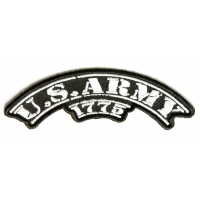Have you ever seen an intricate biker or military patch and wondered how it was made? The process of doing so is not all that complicated, but it is an art form that can produce incredible pieces when mastered by the right person. It all begins with the original design put to paper.
Part of the art of making biker and military patches is understanding how a design drawn on paper will be translated for use on a digital embroidery machine. For example, it's one thing to create all sorts of intricate shading with different colored pencils or chalks. It's an entirely different thing to duplicate that shading with embroidery. Therefore, artists must creatively use colors and shapes that can be reproduced by an embroidery machine. That in itself is a challenge.
Once an image has been put on paper it must then be digitized in preparation for embroidery. Patch makers use complex software that allows the artist to reproduce the image in digital format. Some of the most expensive programs are highly automated, using a laser scanner to import the image. Less expensive software packages may require a combination of automation and manual input. Either way, the design must be plotted by the artist before it can be embroidered.
Once the image is digitized, a test machine that will embroider one or two pieces for inspection. From there the artist will make any changes necessary to come up with an image he is happy with. The image is then sent to the embroidery machine where the patches are mass-produced.
The final step of the artistry is for a worker to inspect each patch, trim away excess threads, and fix any imperfections that are workable. Those that don't meet the minimum inspection standards are discarded or recycled.


